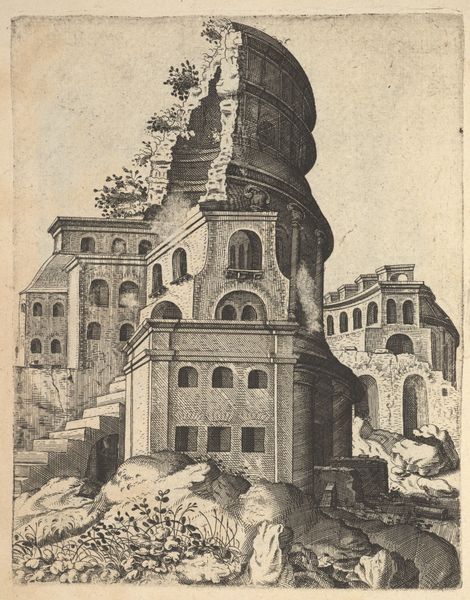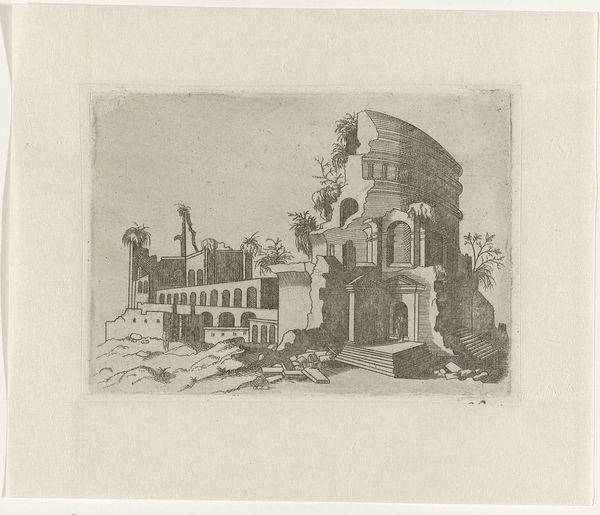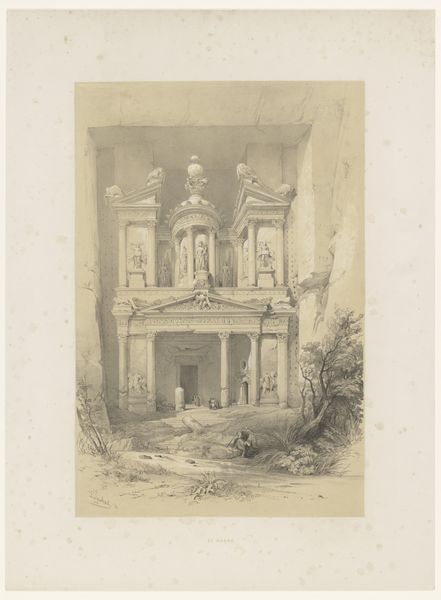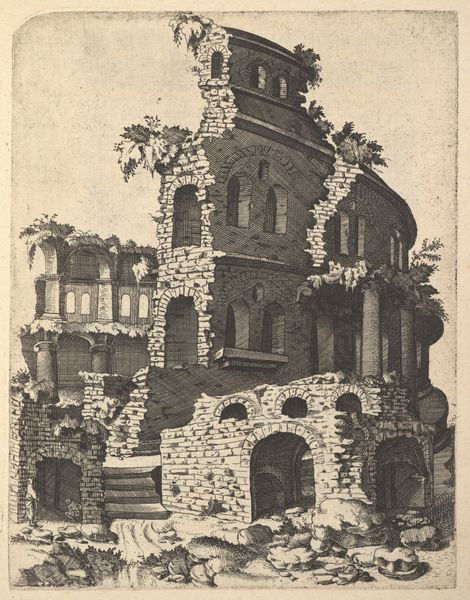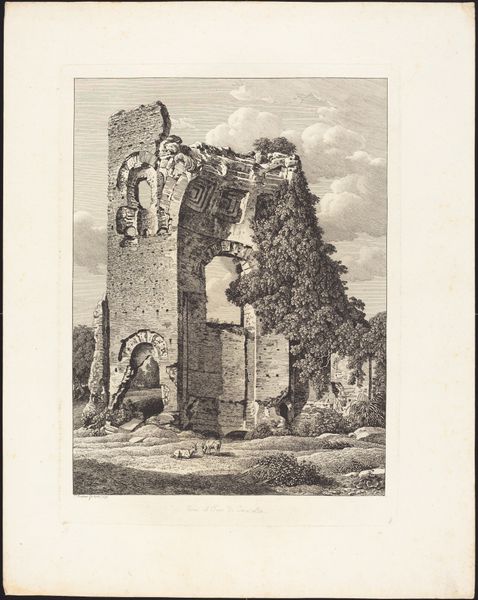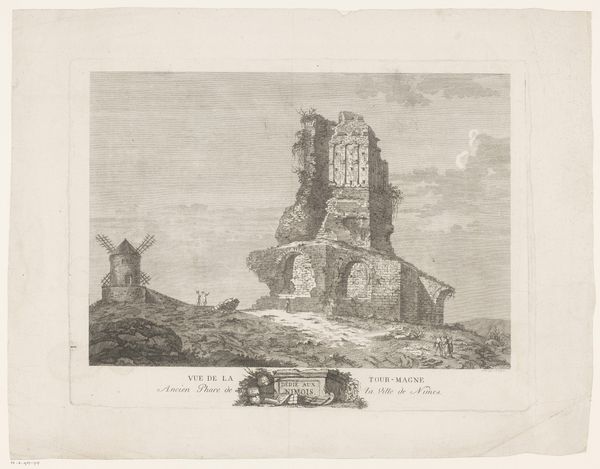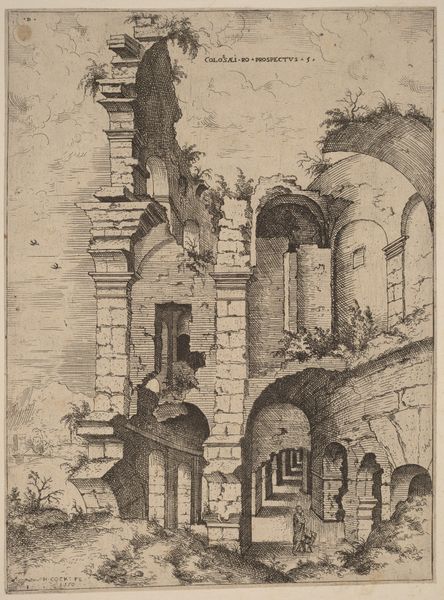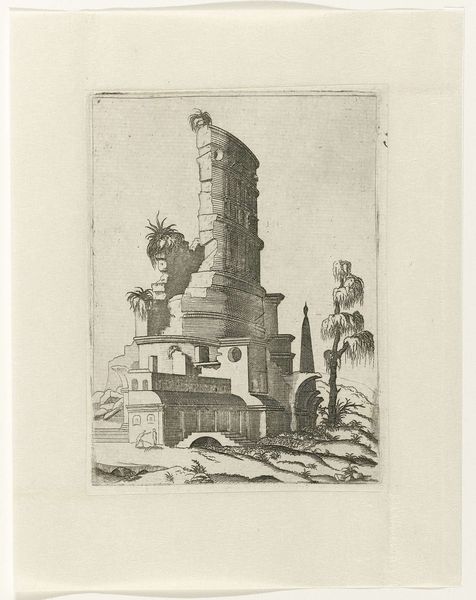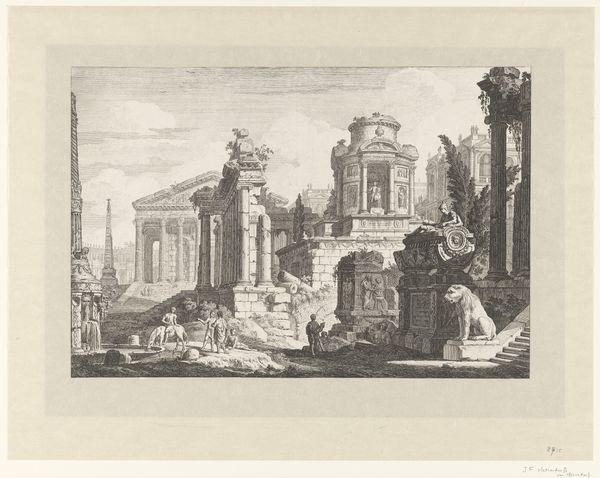
drawing, print, etching, engraving
#
drawing
#
pen drawing
# print
#
etching
#
landscape
#
mannerism
#
form
#
line
#
cityscape
#
engraving
Dimensions: height 183 mm, width 145 mm
Copyright: Rijks Museum: Open Domain
Curator: Lambertus Suavius created "Ruïne met een trap links," an etching, around 1560. What strikes you about the piece initially? Editor: Well, immediately, I’m drawn to this potent image of decay. The structure feels weighty, imposing even in its ruined state. It evokes a strong sense of time and transience. Curator: Notice how the artist used line? The engraving style employs intricate, dense marks that establish a clear definition and create depth in the architecture. The sharp, clean lines juxtapose powerfully with the organic, crumbling forms. Editor: Yes, it almost reads as an allegory, wouldn’t you say? This towering edifice is clearly of significant civic or perhaps religious importance, judging by its scale, now reduced to a fragmented monument overtaken by nature. It's about more than just a physical space; it communicates the ephemerality of power. Curator: The linear detail directs the eye carefully, emphasizing the geometry present despite the ruination. Also, there's a striking relationship between the shapes – the cylindrical tower is mirrored in the smaller structures behind it. Editor: It certainly speaks to Mannerist sensibilities. But let’s think about that cylindrical form specifically, and those arched openings. We cannot help but notice that this form bears a striking resemblance to ancient Roman amphitheaters—a key symbol of imperial authority and entertainment. To present it as a crumbling ruin hints at a significant shift in cultural power. Curator: Quite. Consider how the lines create value. See how it establishes the solidity of the forms? Editor: And the plants emerging from the stone suggest themes of renewal after devastation; life reasserting itself. I wonder if contemporary audiences interpreted this similarly, maybe as commentary on their own political or social climate. Curator: An interesting perspective. The overall design of this 16th-century print certainly lends itself to your viewpoint. Its artistic impact relies so heavily on the precision of the linework itself. Editor: I find it captivating that even in ruins, these symbols speak volumes about the human condition – our ambitions, our legacies, and inevitable decline. Curator: The way lines are utilized in "Ruïne met een trap links" certainly allows viewers to focus on both form and idea. Editor: A compelling intersection indeed – structure, symbolism, and suggestion—beautifully rendered here.
Comments
No comments
Be the first to comment and join the conversation on the ultimate creative platform.
